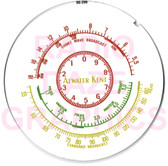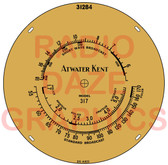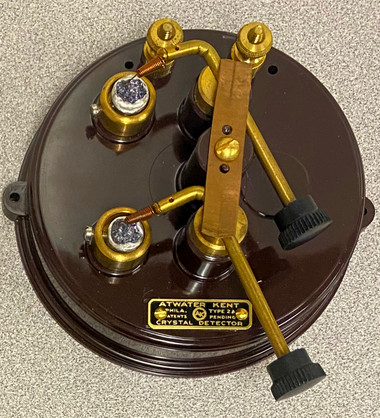 Loading... Please wait...
Loading... Please wait...Categories
Reproduction Atwater Kent 2A Double Crystal Detector
Product Description
The reproduction Atwater Kent 2A No. 4200 Double Crystal Detector comes with two steel galena crystals and authentic packaging box and label as illustrated. Only a few of these are available for purchase.
GENERAL BACKGROUND on the REPRODUCTION ATWATER KENT CRYSTAL DETECTOR
Over the years there has been a lot of research and investigation done on the extent to which Atwater Kent did or did not promote this product. Some of the best background is contained in the August 1989 issue of Antique Radio Classified.
Radio Daze also found an example of a Washington D.C. radio shop, Post Radio, apparently selling the basic AK double crystal detector. The following is an ad extract from the Washington Herald, Saturday, April 26, 1924:
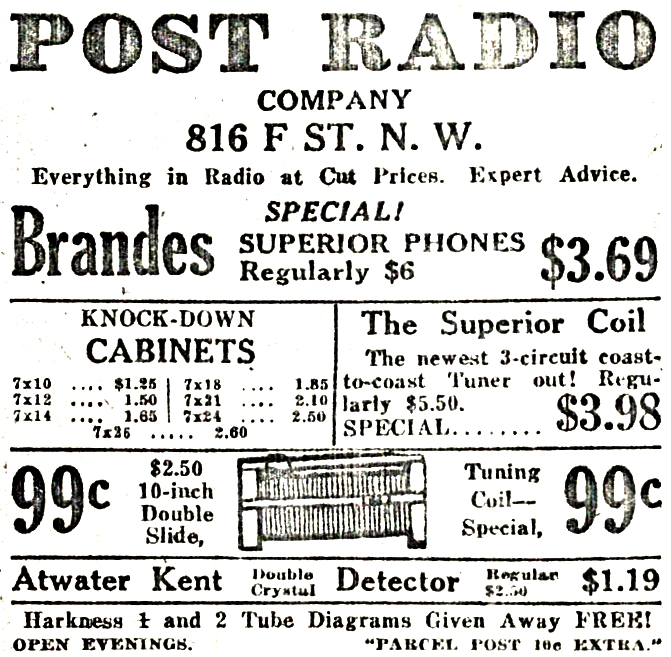
THE RADIO DAZE REPRODUCTION ATWATER KENT DOUBLE CRYSTAL DETECTOR
In 1996 Radio Daze acquired a package of items related to the A-K detector from Phil Weingarten (short biography below). Phil had begun working on making replicas of the A-K crystal detector when his health took a negative turn. The foundation of his efforts was, as he described, acquiring the original stainless steel mold for the detector bakelite base. This mold was apparently found at a used machinery auction in the Philadelphia, Pennsylvania area in 1980. Whether Phil acquired it directly or from a third party is unknown. This is the mold in our possession:
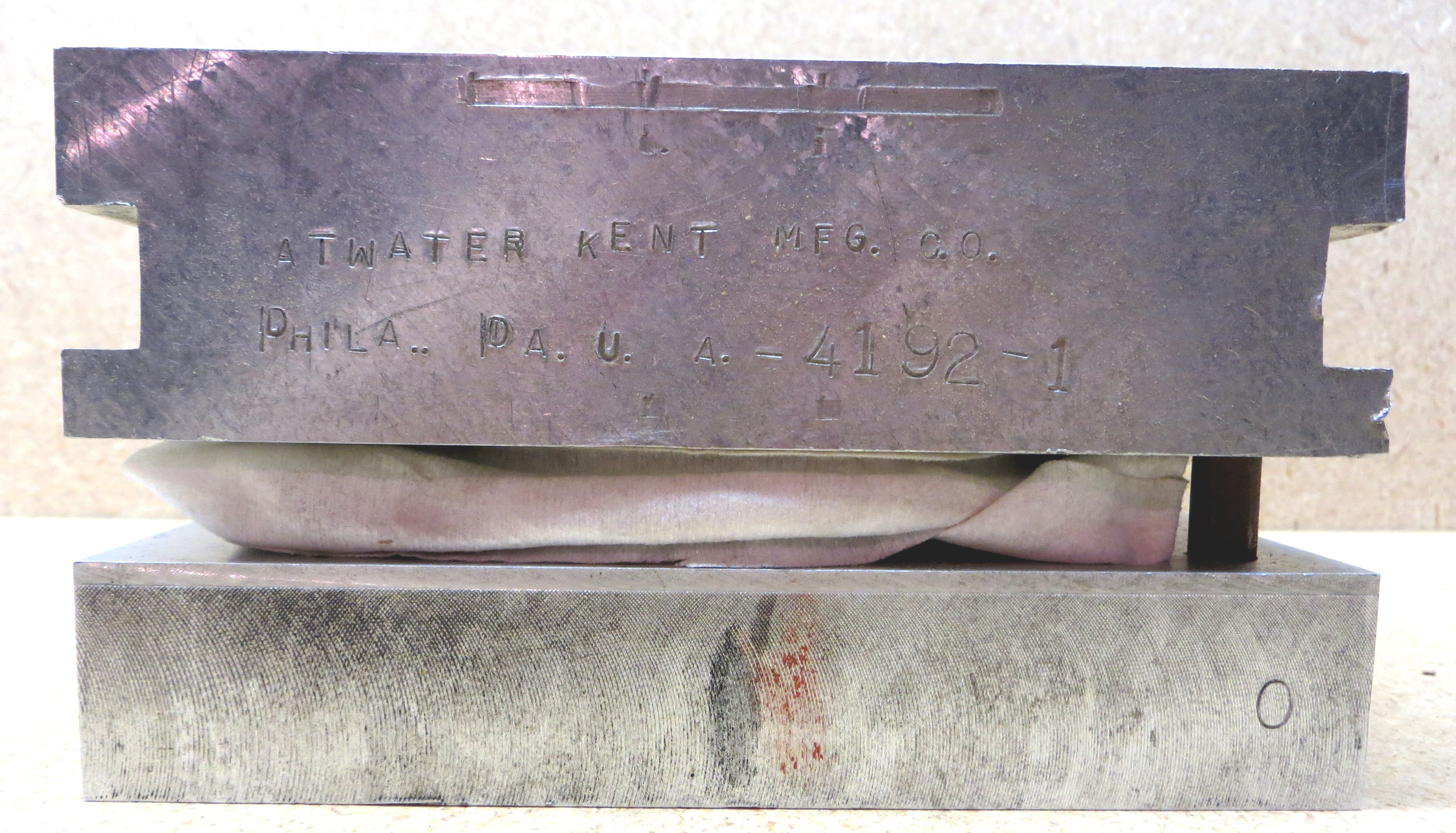
Given the mold, Phil had a quantity of the bakelite bases produced. He also had a quantity of brass model number plates, kraft boxes, box labels made and fabricated some of the individual detector elements. The reproduction crystal detector being offered for sale is based upon the construction of all these elements.
EXAMPLE CRYSTAL DETECTOR RECEIVER IMPLEMENTATION
This is an example of the crystal detector incorporated into a breadboard crystal receiver (PLEASE NOTE: This is shown as an example only - the item for sale is only the detector itself and its packaging as above).
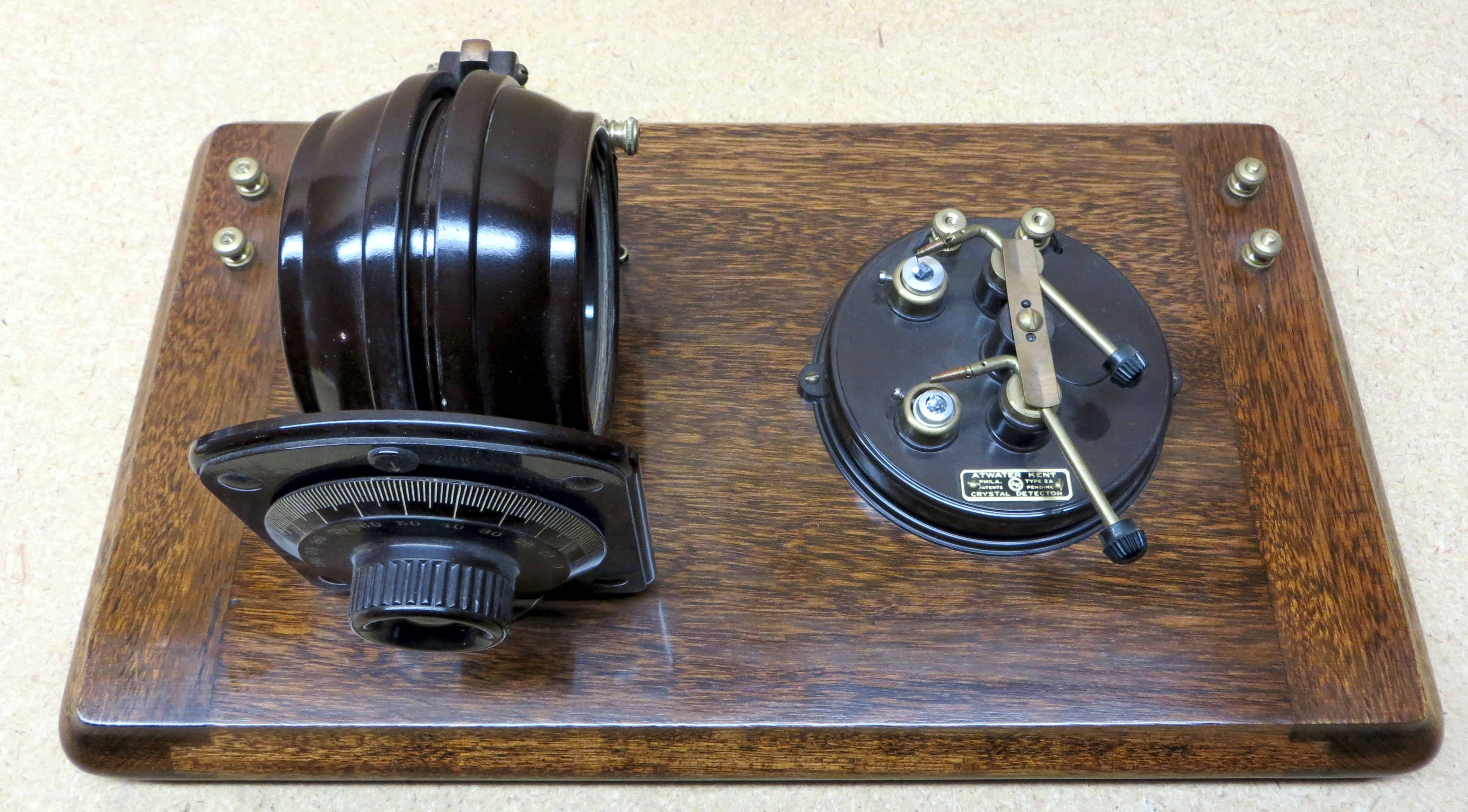
EXAMPLE CIRCUITS WITH ATWATER KENT TUNERS
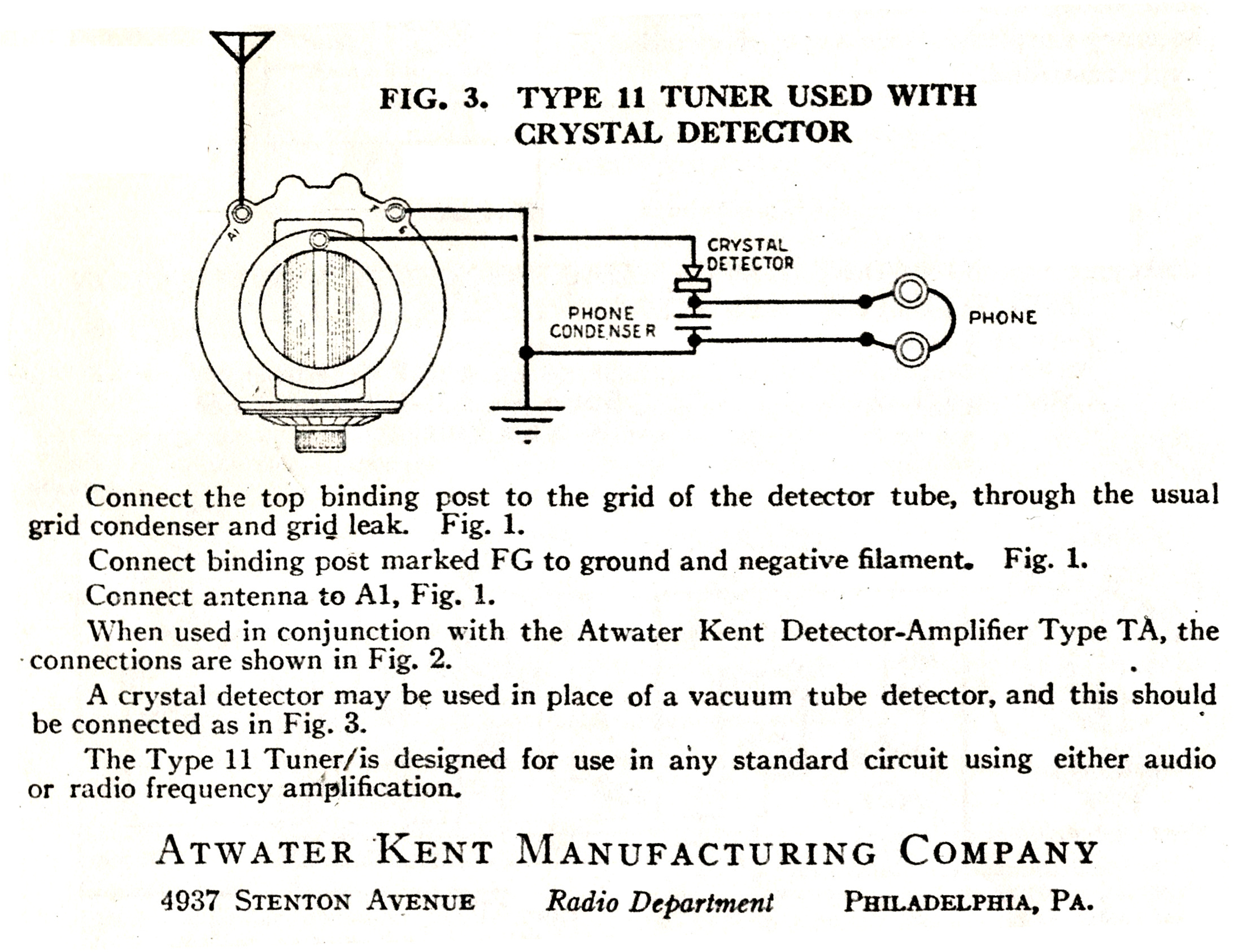
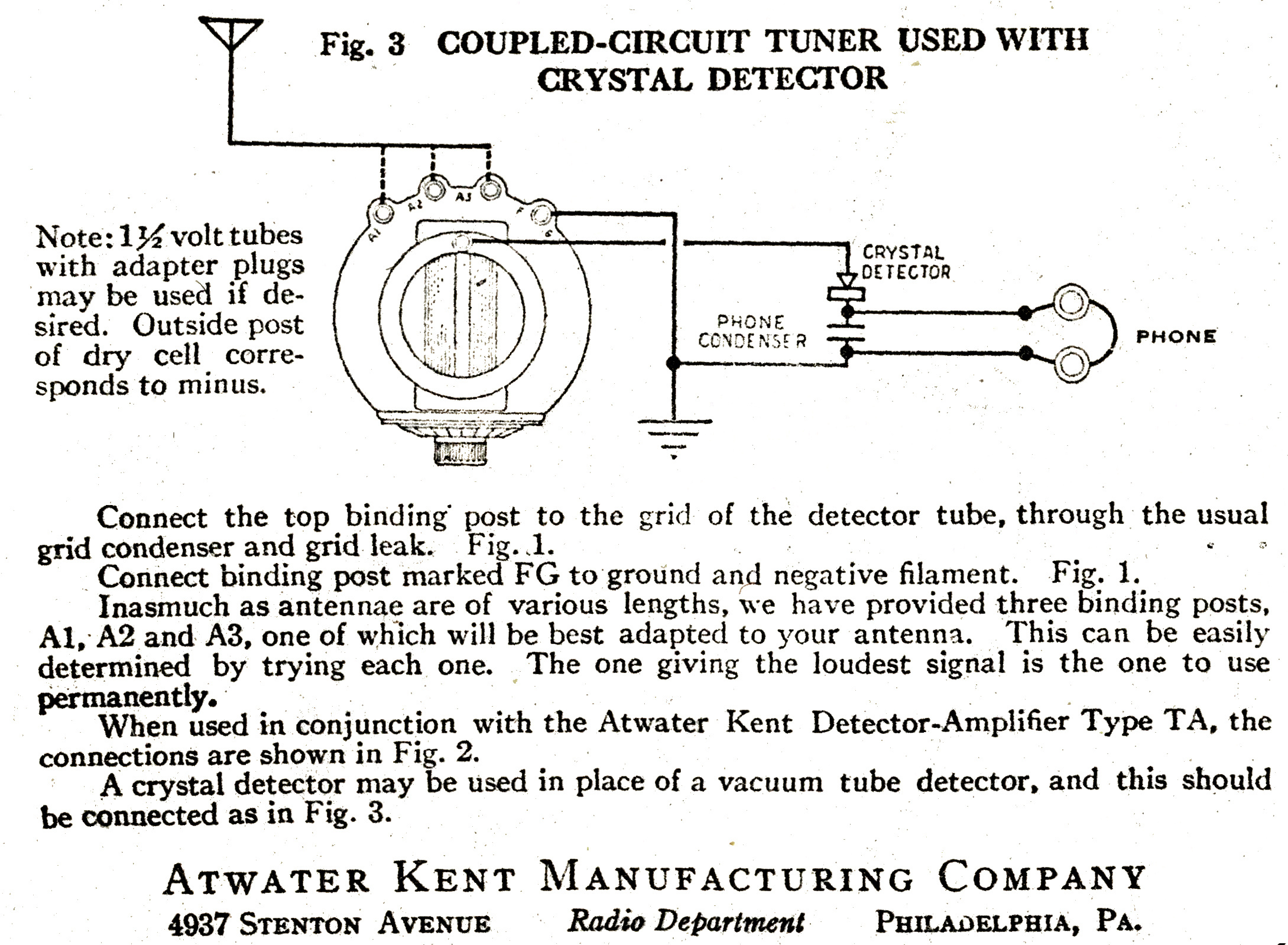
BRIEF PHIL WEINGARTEN BIOGRAPHY
Phil Weingarten was a fascinating, occasionally controversial, individual who lived during the golden age of radio. He was born in 1914 and became fascinated with the novelty of radio and wireless at an early age. Upon graduation from high school, he began work at various jobs in New York's famous lower Manhattan "Radio Row" while furthering his technical education at the RCA Radio Institute. Phil ultimately became known as one of Radio Row's top technical talents giving him the opportunity to become friends and associates of many icons of the early radio age such as Hugo Gernsback. He served during World War II, involved in advanced vacuum tube projects, and afterward began a vintage and war electronics surplus business. Phil's main interest was in early wireless items and he ultimately had his Forest Hills Wireless Museum in the borough of Queens, NY. In addition to this technical expertise, Phil was a master craftsman. He created many very high quality replicas - especially of early wireless items. More often than not, the quality was of such a high-level that it was very difficult to distinguish the replicas from originals - a distinction that often got Phil into controversy upon sale of the items. The founders of Radio Daze had the opportunity to meet and visit Phil on multiple occasions in the mid-1990s and were fascinated by his stories of the early days of radio and his workshop areas. Of particular interest was his vacuum tube fabrication equipment including glass blowing/forming, vacuum pumps, a wide range of raw filament and element materials, etc. During the last few years of his life, Radio Daze acquired a variety of items directly from Phil who died in 1998.





